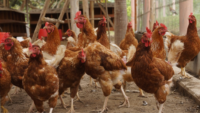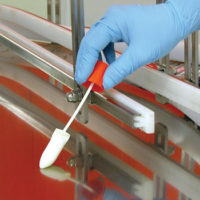McMaster Researchers Develop Rapid Test for Salmonella Contamination in Foods

Credit: Philippe Zuber via Unsplash
McMaster University researchers have developed a rapid, inexpensive test for Salmonella contamination in poultry and other food. The test provides accurate results in an hour or less without the need for accessories or a power source.
The rapid test has advantages over the commonly used pathogen monitoring method using lab cultures, which requires at least a full day to produce results. Once made commercially available, the new test could help poultry processors mitigate Salmonella contamination, which is a recent focus of the U.S. Department of Agriculture (USDA).
The test would also be beneficial for ensuring the safe processing of other foods that are particularly vulnerable to Salmonella, such as eggs, dairy products, and ground beef.
McMaster researchers developed a new, synthetic nucleic acid molecule, which serves as the basis for the rapid test. For the test, the molecule is sandwiched between microscopic particles such as gold. The test platform lines the inside of the tip of a pipette and begins to work when a liquefied sample of the food being tested is drawn inside the tube. If Salmonella bacteria are present, they cut through the particles, allowing the molecule to escape.
Then, when the solution is dropped onto a paper test strip, the presence of Salmonella is indicated by visible shade of red, enabled by new type of biosensor that was also created by the McMaster team. The greater the concentration of Salmonella, the brighter the color red appears.
The technology was developed with support from nonprofit research organization Mitacs, as well as Toyota Tsusho Canada Inc., which plans to develop the innovation for commercial use.
Looking for a reprint of this article?
From high-res PDFs to custom plaques, order your copy today!






